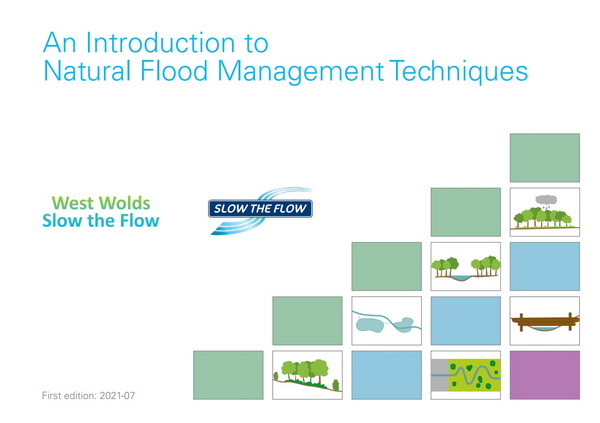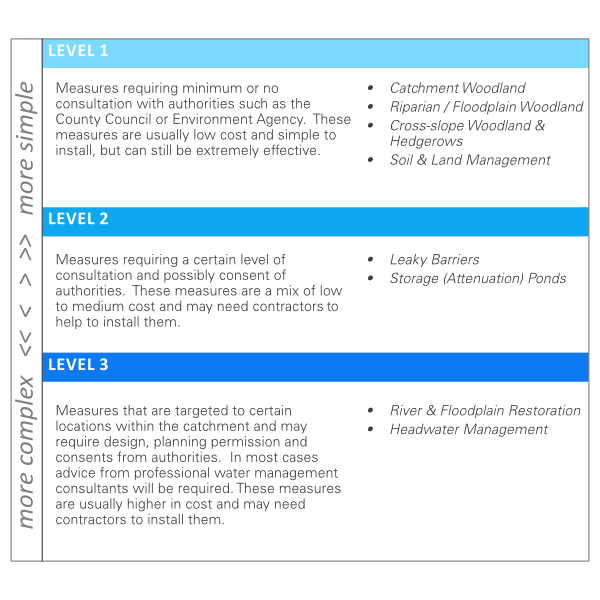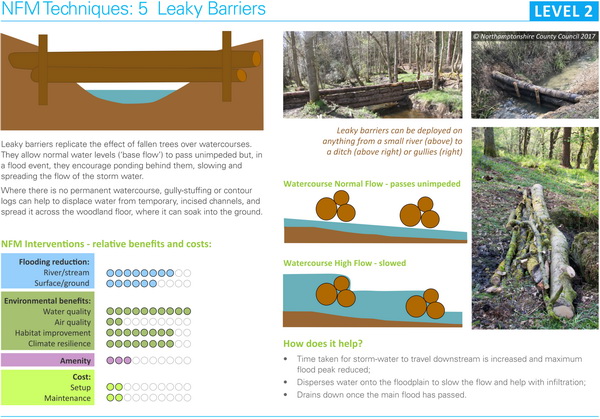
2B has helped West Wolds Slow the Flow and Slow The Flow (Calderdale) to create a new resource on Natural Flood Management, and the ways of implementing it, in terms that everyone can understand.
The document collates information from a range of existing resources, each of which are valuable in their own right but often contain a lot of detailed, technical information, aimed at professionals in the field. Local flood group members just starting to find their way in the NFM world may want to know more but, without a background in this sector, many of the existing resources could be overwhelming.
Our aim was to provide a guide that condenses the key information, for anyone wanting to find out the basics about NFM.
The guidance gives a quick overview of what NFM is and why we should be doing it. A table has been created to clearly show how easy or difficult each measure is to implement and maintain. The difficulty is split into 3 levels, and this is then shown on the individual measure sheet as a reminder, and to allow quick comparison.

The NFM measures covered in the publication are as follows:
- Catchment Woodland
- Riparian & Floodplain Woodland
- Cross-slope Woodland & Hedgerows
- Soil & Land Management
- Leaky Barriers
- Storage Ponds & Basins
- River & Floodplain Restoration
- Headwater Management
Each NFM technique has a dedicated page in the document, stating its level of complexity, and a visual 'top trumps' rating of relative benefits and costs, for easy comparison with the other techniques. There is a simple drawing and short description of the technique, along with photos of its use in the real world, and a short summary on how it helps to slow the flow.

At the end of the guidance we have collated some useful links to further in-depth information on NFM, for anyone interested in learning more.
Download the document from the West Wolds Slow the Flow website, or view as html content on the Slow The Flow website.